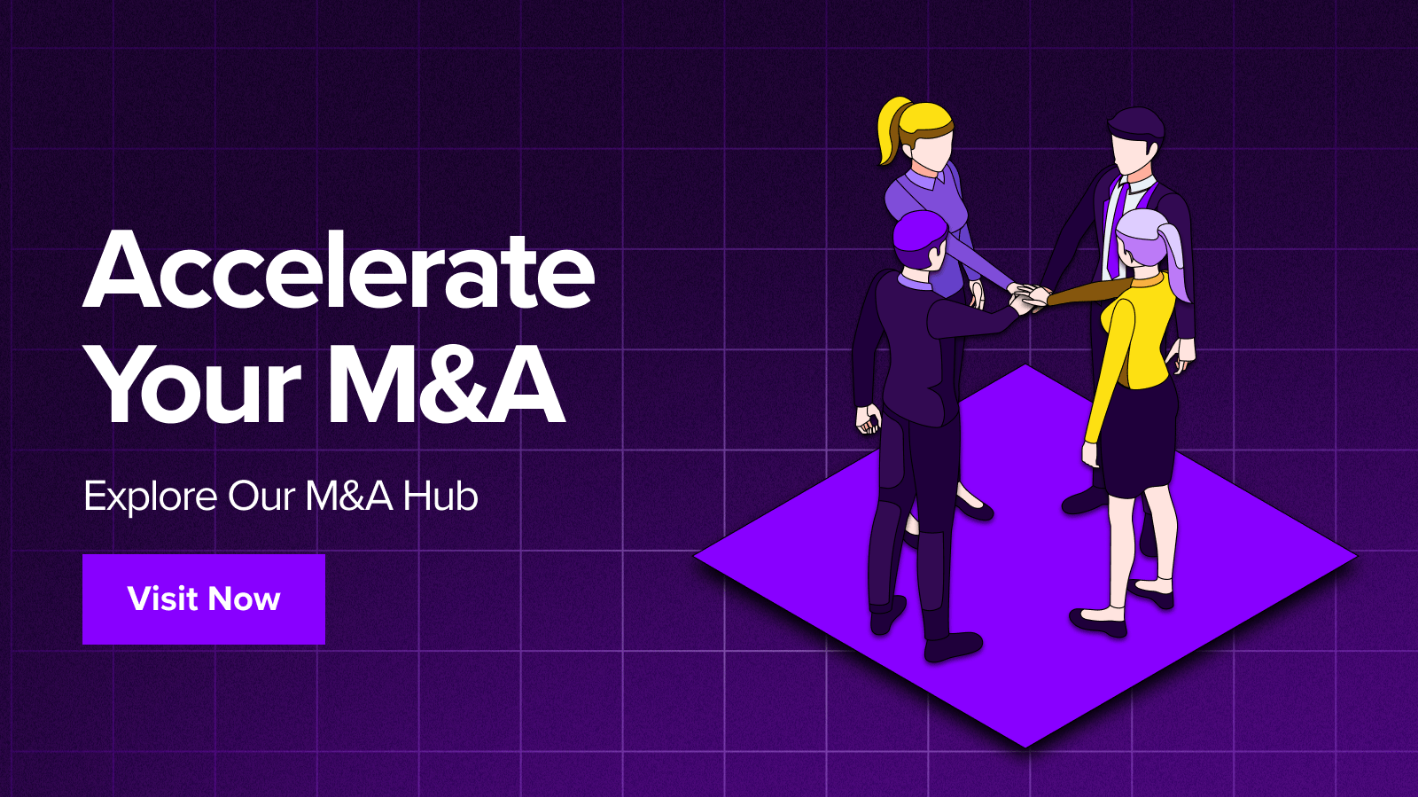Bringing two companies truly together during the crucial post-merger integration phase is no easy feat. There's almost endless information from applications, servers, business capabilities, people, processes, and data that must be carefully considered for these deals to be successful and deliver the intended value to the organizations involved. The pressure is high; according to PwC’s 2021 Annual Global CEO Survey, business leaders have a growing focus on building successful mergers and acquisitions (M&A) strategies to accelerate growth and gain scale.
Typically, 70-90% of acquisitions fail. While there are numerous reasons why mergers and acquisitions aren’t ultimately successful, one reason is that the organization pauses business operations for too long to focus on integration. Enterprise Architecture (EA) can help key stakeholders and decision-makers—like Chief Financial Officers (CFOs) and Chief Operating Officers (COOs)—make fast, credible decisions during the integration phase to reap the benefits of a successful M&A initiative.
Here’s how.
Gaining a Baseline Understanding of a New Company
For decades, getting a complete picture of the company being acquired—and all its technology, people, and data—meant endless spreadsheets, time spent on manual reviews, and many hours with external consultants, all followed by the production of lengthy reports. Today’s EA tools can change that.
Using Ardoq, organizations can capture a complete picture of the company that they are acquiring or merging with, looking at the business ecosystem, the technical fit of its current application portfolio, and risk profiles associated with bringing the company on. Capturing this data with cloud-native EA tools, rather than mountains of spreadsheets, means organizations have a way to efficiently gather key data that will help drive informed IT and business decisions.
When customer SYNLAB, Europe’s leading medical diagnostic services provider, was involved in a merger, Adrian Jones, SYNLAB’s Group Head of IT Strategy, Innovation, and Architecture, used Ardoq to drive the entire process of evaluating the company they were merging with, which sped up processes and created clarity and efficiencies. Once that baseline model was built, Adrian used Ardoq to model the organization’s business and IT landscapes in different ways to see how change projects developed and how integrating the organizations could play out in reality.
Creating a Strategy for Post-merger Integration
With a complete picture of both companies’ architectures, organizations can better answer questions that feed into their post-merger integration strategy. Business leaders need a concrete understanding of what they want to achieve, their overall timeline, how they will think about customers and products as part of the integration, and what should be integrated first and why.
For example, if the organizations continue running as two separate brands publicly, perhaps the integration strategy focuses on back-end processes to remove redundancies and reduce spending. Or, say an acquisition focuses on a product line, the integration strategy might prioritize integrating order handling systems and customer analytics tools.
Executing the Integration Strategy
How leaders want the company to run post-merger will drive decisions about where to integrate and build new capabilities. Once the organization understands where integrations need to happen, it can identify the necessary steps to pull these integrations off. With Ardoq, businesses can model multiple courses of action, including the cost-benefit and analysis of time scales, to make sure they’re picking the right one.
Identifying which applications perform the same technical capability is just the first step. The challenges start when deciding the whats and whys of the consolidation. To make the right decision, a solid understanding of the impacts created by different potential actions is key. At this point, organizations know what they need to do, but they also need to understand the effects of those changes:
- Which consolidations drive the most cost savings?
- Which might send ripple effects across other parts of the business?
- How do business rules and processes differ?
- How does a particular technology fit into these processes?
Enterprise Architecture Tools for Successful Mergers and Acquisitions
Understanding the consequences of each change in the integration process is critical to success. Ardoq can shorten the time taken to complete this important analysis work and improve the time-to-decision from the typical weeks to days. Ardoq’s Scenarios tool, which allows users to simulate and compare current and future states with data-driven and collaborative scenario analysis, can help visualize the impact of different paths forward. For each scenario, users can stipulate which systems are involved, which processes need to change, and which teams are responsible. The resulting time savings offers multiple benefits. On average, for a company with multiple applications and medium IT complexity, this conservatively can save the time and resources of up to two full-time employees or up to four external consultants.
As organizations conduct this important analysis work, they cannot underestimate the value of communicating the changes made with confidence to impacted employees. Mergers and acquisitions require human change management, and features within Ardoq make the process easier:
- ✅ With Broadcasts, information can be shared with people across the organization, so they’re kept up-to-date on the changes made and the timelines associated.
- ✅ Ardoq allows users to create presentations with dynamic visualizations that are specific to certain roles within the organization.
- ✅ People-in-the-Graph modeling allows people to access information in Ardoq with themselves at the center, which means they can see how the systems they use, alongside the processes they are a part of, will be impacted by post-merger integration.
Suppose organizations ignore the steps to understanding and uniting the underlying architecture powering the two integrating companies. In that case, they risk having one company name in spirit but multiple “virtual” companies under the surface with duplicative applications and processes.
By using EA tools for gaining a baseline understanding and creating an informed strategy for post-merger integration that prioritizes impact on the business and its people, organizations will have better odds for success when it comes to future mergers and acquisitions endeavors.
➡️ To learn how Enterprise Architecture can help support successful mergers and acquisitions and how Ardoq can help organizations successfully navigate change, visit our M&A hub.
 Jason Baragry
As Ardoq's Chief Enterprise Architect, Jason brings his expertise from over 25 years of experience working in enterprise architecture, from both IT and business interfaces.
Jason Baragry
As Ardoq's Chief Enterprise Architect, Jason brings his expertise from over 25 years of experience working in enterprise architecture, from both IT and business interfaces.




.png?width=3000&name=ardoq-content-M%26A(1).png)

/Logos/Ardoq/RGB_Ardoq_Logo_Stacked_White_Monochrome%201.png?width=80&height=77&name=RGB_Ardoq_Logo_Stacked_White_Monochrome%201.png)

